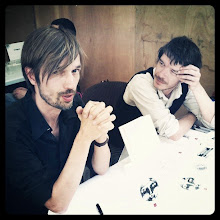A Boston show in la nuit des temps: Mascott and Toog play "History, As Planned" from Mascott's album 'Follow The Sound' live at The Middle East in Cambridge MA on October 26, 1999.
samedi, janvier 30, 2010
vendredi, janvier 29, 2010
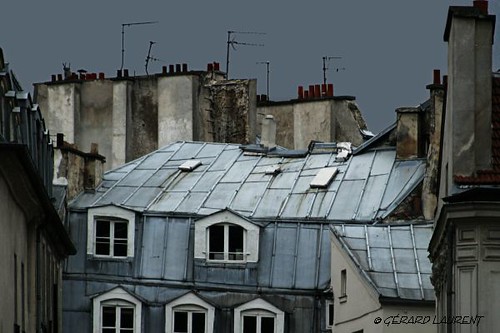
Paris 2003 canicule was an incredible heat. It killed 5000 people in a few days. 7 years later, we know nothing. No 'social profile' (what an icy word) of the victims was made. All what we know is: most of them were old. My thought hasn't changed: Paris houses have zinc roofs, top floors are extremely hot in the summertime (I know it by experience). Paris houses have become extremely expensive (price X 4 in 20 years; salaries X 2). Many people are unable to move to an other place; so it's probable that many victims were old people trapped by poverty in their top floor oven.
Haïti and Kobe (Japan) earthquakes have similarities: the 2 cities are almost the same size; almost the same Richter scale; 6500 victims in Kobe, but 200 000 (?) in Haïti: 30 times more, because of poverty and the bad quality of the constructions. But the two cities should definitely talk together. In the future, after the mourning in Haïti, it will become essential for the politicians to make a correct analysis of the social profile of all the victims. If Haïti knows it, then they could start to work from the beginning making the right decisions.
jeudi, janvier 28, 2010
Last night I couldn't sleep and I was thinking about Haïti after a virtual flight over Port-au-Prince and the Hispaniola island. The satellite image is recent and taken after the 12th january; many destructions are visible, you can see tents in the stadium and many other places. You see the big white heaps of smashed buildings in the streets. You think of the many corpses (who used to be living people before 5pm, 12th january) trapped inside, without a sepulture. You see all the corrugated roof houses, everywhere in Port-au-Prince, from the airport to the mountains. An ambiguous thought occured to me: the poorest people probably don't live in the heavy & solid collapsed building. Most of the fragile houses seem to be still standing. I also think of a 32 years old priest from the church near my house, who spent 2 years in Santo Domingo and decided to fly to Haïti, to give a hand. To give a hand? It probably means to bury the late victims of the seism; to console the families; to start to reorganize the destroyed churches. I gave him poems. What an improbable gesture, to give poems for Haïti rather than money. Here is one: "amour oblige".
amour
oblige
en
liberté
samedi, janvier 23, 2010

Here is the last cover project for my next album Goto on Karaoke Kalk. The illustration is made by my wife Florence Manlik. It was not easy to find the adequate image for such a musical freak show. This is the one image we feel 100% enthousiastic about and we hope that everybody likes it too! (If I play live concerts, I assume that I will have to wear this redemption underpants on stage).
mercredi, janvier 20, 2010
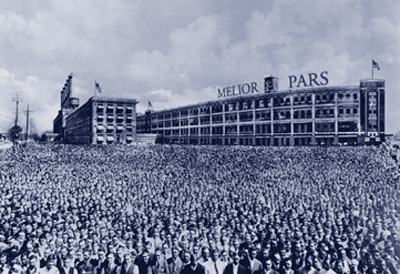
Nobody knows that I'm running this company called Melior Pars (the best part, in latin). Melior Pars was once a huge poetry publishing company. I had to fire all employees (a total of 800) and sell the many printing machines after the withdrawal of the main shareholder, during the peak of the poetry crisis in 2008. The result is below: I have to publish handwritten copies to maintain the production and keep the company upright. The first book of the new handwritten serie is called PIVOT KINSKI; it's a 48 pages collection of short poems by Gilles Weinzaepflen. I was lucky to not have to copy neverending ones; most of Weinzaepflen's poems are 4 verses long. If someone wants to get a copy with a Melior Pars postcard and bookmark, just drop an email to meliorpars@gmail.com and I will get back to you as soon as I have my next pause café.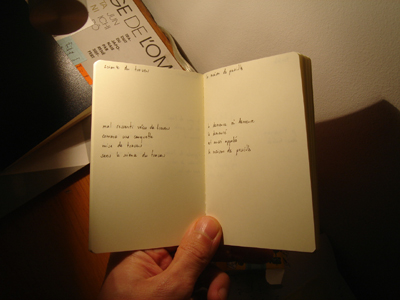
Also, the first poetry book by Gilles Weinzaepflen, L'Egalité des signes is now available directly from the publisher Le Quartanier in Canada. This little book is the core of Weinzaepflen's ethics, aesthetics, politics and economics. Don't forget that poetry is the future of music.
dimanche, janvier 10, 2010

Q. You directed in 1985 a beautiful documentary film called TOKYO MELODY about Ryuichi Sakamoto. How did this French project start?
Elizabeth Lennard: I attended the Cannes Film Festival in 1984 at the first screening of "Merry Christmas Mr. Lawrence" (Furyo) by Nagisa Oshima. Sakamoto's music was a revelation; the incredible relationship to the images and I was fascinated by Ryuichi Sakamoto's persona in the film.
Q The film was funded by INA (Institut National de l'Audiovisuel) and the FR3 channel. Was it easy to get them involved? Did you work with a Franco-Japanese crew? Did they went along together easily?
E.L. When I came out of the Cannes screening I ran into two producers from l'I.N.A., Muriel Rosé and Sylvie Blum whom I knew a little from having done a short film produced by l'I.N.A. and I had also shown them a documentary of mine on the piano duo, the Labèque Sisters. They shared my fascination with Ryuichi Sakamoto and were trying to come up with projects which would combine l'I.N.A.'s "experimental" attitude to television and Pop music or "Varieté" - They told me that if I had a way of approaching Sakamoto they would produce a documentary... They got FR3 involved or perhaps they had already spoken to FR3 about doing "experimental" documentaries about music. I brought my French l'I.N.A. crew to Japan. In Japan we had the invaluable help of Pete Barakan, who was Ryuichi Sakamoto's right-hand man at the time.
Q. What was your relationship with Japan before filming?
E.L. Besides my love of Japanese food I knew very little about Japan before going there, alone to scout locations.
Q. Did you know the music of YMO (Yellow Magic Orchestra) and Sakamoto before going to Japan? If yes, how did you get into this music?
E.L. When I returned to Paris from Cannes, I thought to myself, how could I possibly contact Sakamoto? Internet didn't exist. Fax machines were just being invented. I had lived in Los Angeles in the early 70's and worked my way through UCLA film school doing album covers. (I am also a photographer.) I would visit the record companies and they were very generous to me and gave me lots of free albums. A & M Records distributed YMO at the time. I looked in my cupboard and I found lots of YMO records with wonderful covers. I began to listen to them. But I had no way of getting in touch with Sakamoto. Then I went to New York, where I lived part of the year, and went to dinner at ODEON. Miraculously seated at another table, was the former creative director of A & M records in L.A. Jeff Ayeroff, for whom I had worked. I went over to his table to say hi, and another coincidence, Kiki Miyake, a japanese girl who lived in New York and who had accompanied the YMO tour in the U.S., was seated at Ayeroff's table. We were introduced and I met with her and I began to elaborate my project, while Miyake talked to me about Tokyo and Sakamoto. She sent him some of my photo postcards and arranged for me to meet Ryuichi in Berlin where he was recording an album with David Sylvian.
Q. You filmed Ryuichi Sakamoto during the process of creation and recording, very intimate and unique moments. Was it easy to get the musician's approval? What memories do you have of this extraordinary experience?
E.L. So I flew to Berlin and straight off the plane went to the studio near the Berlin wall where Sakamoto and Sylvian were recording. I listened and waited and finally I had my meeting with Sakamoto, to whom I showed some more of my photoworks and spoke about my ideas for TOKYO MELODY: a double portrait of himself and a sound portrait of Tokyo as seen through his eyes. We hit it off right away, and he liked my idea, and after helping l'INA negotiate with Sakamoto's producer via telex machines they reached an agreement. Sakamoto was a very cooperative subject, at home with the camera, a true creative person, interested in the creative process. I had thought, from seeing "Merry Christmas Mr. Lawrence" that he spoke English well, but in fact his English, at the time, was not very good, and most of the time we spoke thru an interpreter. But I think we understood each other. When we finished the film, edited by the Paris based japanese editor Makiko Suzuki, Sakamoto came to Paris for a concert and we gave him a private screening for his approval. I can honestly say, he loved the film and was very moved by it. 
Q. Sakamoto seems to have a personal driver in your film. Did he live and behave like the superstar he was at this time? Did you share other moments together, apart from filming?
E.L. It's not that Sakamoto "behaved" like a superstar, he was a superstar- totally sheltered from his public. Don't forget, YMO were considered to be the "Beatles" of Japan. When I suggested that I film him at Shinjuku or in the metro he was amused by the idea. We filmed at Shinjuku very early in the morning and young japanese girls gathered around weeping with emotion. In the metro it was in and out very quickly, but we were lucky in that we found a poster with Sakamoto in an ad. At Tokyo Tower we did have to stop shooting because a big crowd gathered in a few minutes and my producer was worried about crowd control. But I think Sakamoto was delighted to be so close to his fans.
Q. The sequence with Akiko Yano and Ryuichi Sakamoto playing together is very moving. What memories do you have of Akiko Yano? Where Sakamoto and his wife close to each other?
E.L. When we filmed at Ryuichi Sakamoto and Akiko Yano's residence, Sakamoto was very clear that we had to ask Akiko's permission to shoot. As I was told is the custom in Japan, the woman runs the household and makes decisions about what goes on there. They seemed close at the time and their duet was impromptu. Sakamoto has great respect for Akiko as a musician and performer.
Q. Tokyo and Japan seem to have started to spread influence in the 80's. Wim Wenders shot his movie TOKYO-GA in 1985 too. Did you remember this period as a blooming period for Japanese culture?
E.L. In fact, I shot my film in 1984. When I finished the film, Tokyo Melody got onto the film festival circuit and toured worldwide, often in a program with Wim Wender's TOKYO-GA and Chris Marker's SANS SOLEIL or at the same festival with Paul Shrader's MISHIMA. I do think there was a great deal of curiosity about Japan at the time: similar to now.
Q. 25 years later, what remains of this Japanese experience? Have you been in Japan since then? Do you feel like it's a different country now?
E.L. Unfortunately I have not returned to Japan since I made Tokyo Melody. From what friends who have been there recently have told me, I don't think it has changed fundamentally. Coming from New York and living in Paris, Japan was an eye opener in the sense that New York seemed very old in comparison...
Q. I've directed a documentary about the French electro-pop music pioneer Jean-Jacques Perrey, who was born in 1929. It's called "Prélude au sommeil" (2009). Are you familiar with him and other electronic music pioneers?
E.L. I'm not familiar with Perrey, but I would love to see your documentary. i do know and appreciate Pierre Henry.
Q. Can you say something about you? What are the highlights of your artistic life? What is your career focused on?
E.L. Tokyo Melody was one of the highlights of my filmmaking career so far... and I have continued to make documentaries on other "cultural" subjects. Another highlight was the creation of a video opera "Accents en Alsace" based on a Gertrude Stein play with the composer Marc Olivier Dupin which premiered in 2002 at the Musica Festival in Strasbourg and at the MC93 theater in Bobigny. I continue showing my photo works in which video plays a large part; (I have some work currently on show at the Marie Victoire Poliakoff Gallery 95 rue de Seine, 75006 Paris and in New York at Dinter Fine Art Gallery). I just did a video for my writer friend Danielle Mémoire's "Rosebud" piece at the Centre Pompidou. I love to combine images with music. My dream is to make a feature film -the screenplay is ready- I'm just waiting to find the right producer!
Link to a video I did a few years back, homage to Willy de Ville: "Berkeley Girls". Link to my website
Ryuichi Sakamoto's pictures © Elizabeth Lennard
vendredi, janvier 08, 2010
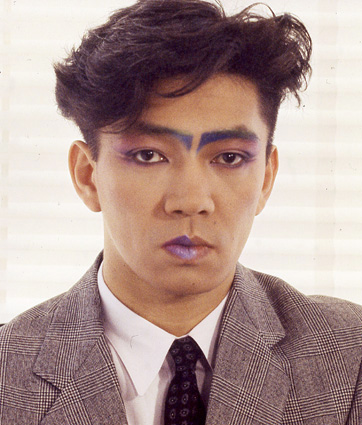
We will have Elisabeth Lennard doing an interview on this blog. In 1985, she directed Tokyo Melody (thanks Momus, for the link), an extraordinary documentary about Ryuichi Sakamoto, shot in Tokyo. I wanted to know more about this experience and asked Elisabeth a few questions... If you haven't seen Elisabeth Lennard's movie, you'd better go first on youtube and watch it (62 minutes). The photo of R.S. was made in Tokyo by Elizabeth while doing her superb film.
samedi, janvier 02, 2010
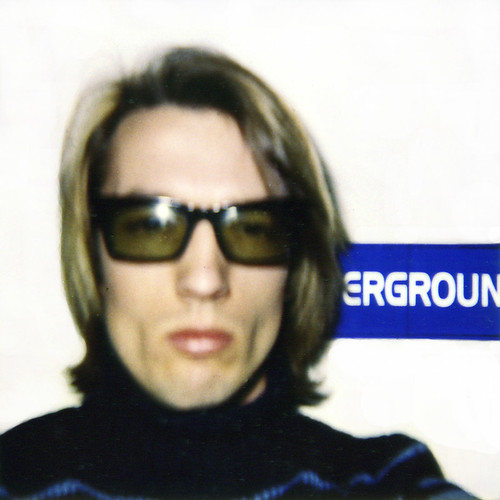
In the year 1996, I recorded my first album "Ergroun" for an indie label in Marseille, where I lived at this time. The guys from the Libellule label saw me in a concert and signed me immediatly; maybe because I released a living chicken in the venue during the show. They were slow and the CD eventually came out in 1998, only one year before "6633", which I usually call my first album. The title came from the Polaroïd frame, shot in the London tube. I like these songs, especially "Le genou des choses" (the knee of things). "Ergroun" is now available on Itunes (8$99) and other mp3 distributors; have a good time!
1. Tout va bien
2. Mauve
3. Le genou des choses
4. L'art et la manière
5. Jardiland
6. Le dé
7. A l'origine
8. L'été
9. Chinois
10. Retour à Capri
11. Aux quatre vents
12. Italia
vendredi, janvier 01, 2010
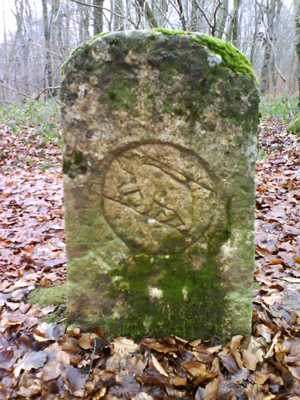
I went to a place called les 3 puissances (the 3 powers) in southern Alsace, 35 kilometers away from my home town Mulhouse. 3 markers can be seen: the old limit between France (fleur de lys) and Switzerland (climbing bear). 
The old border between France and Deutschland, with the red letters F and D (Alsace-Lorraine became german after the 1871 french defeat and stayed german until 1918) ends here, starting from Duché du Luxembourg. The D marker carries the number 4056 on one side: this is the 4056th marker, one marker every 100 meters. 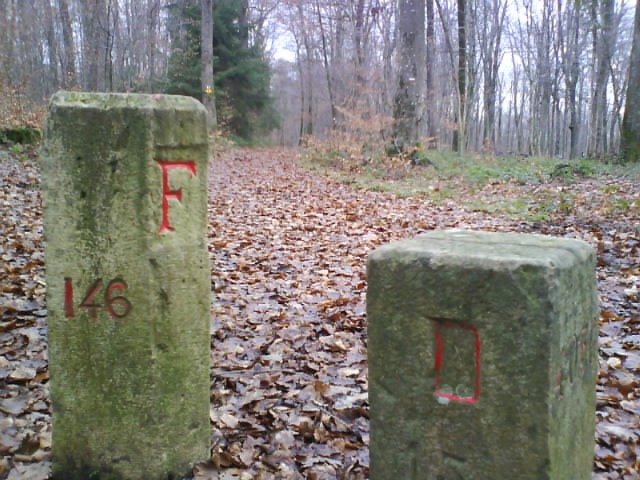
I'd like to make this 400 km walk one day. If someone wants to do that walk with me, please send me an email. If Werner Herzog wants to join, why not but it's a 1450 $ fee. I need sherpas for carrying my toothbrush.
This happy new year post is kind of boring, but don't you find it boring to have the year changing every year? Why not keeping the same year a few more years, especially when it's a good year? We could have kept 2009 until 2012; or at least until fall 2010. Changing years should remain a personal option, like the border system. For me, France is located near the city of Lens. It's a very small territory, a garden where an old man grows carrots & leeks.
"What is life? What is the process of living? Everyone knows that life can be boring, monotonous, at work, in the family, anywhere. It's hard to make both ends meet, to raise children... And the thing that we all have in common is that we're always thinking about holidays. And then we all head into holidays at the same time, creating huge traffic jams on the roads... It's a real nightmare. Because everyone wants to reach as soon as possible an eventful elsewhere."
OTAR IOSSELIANI
